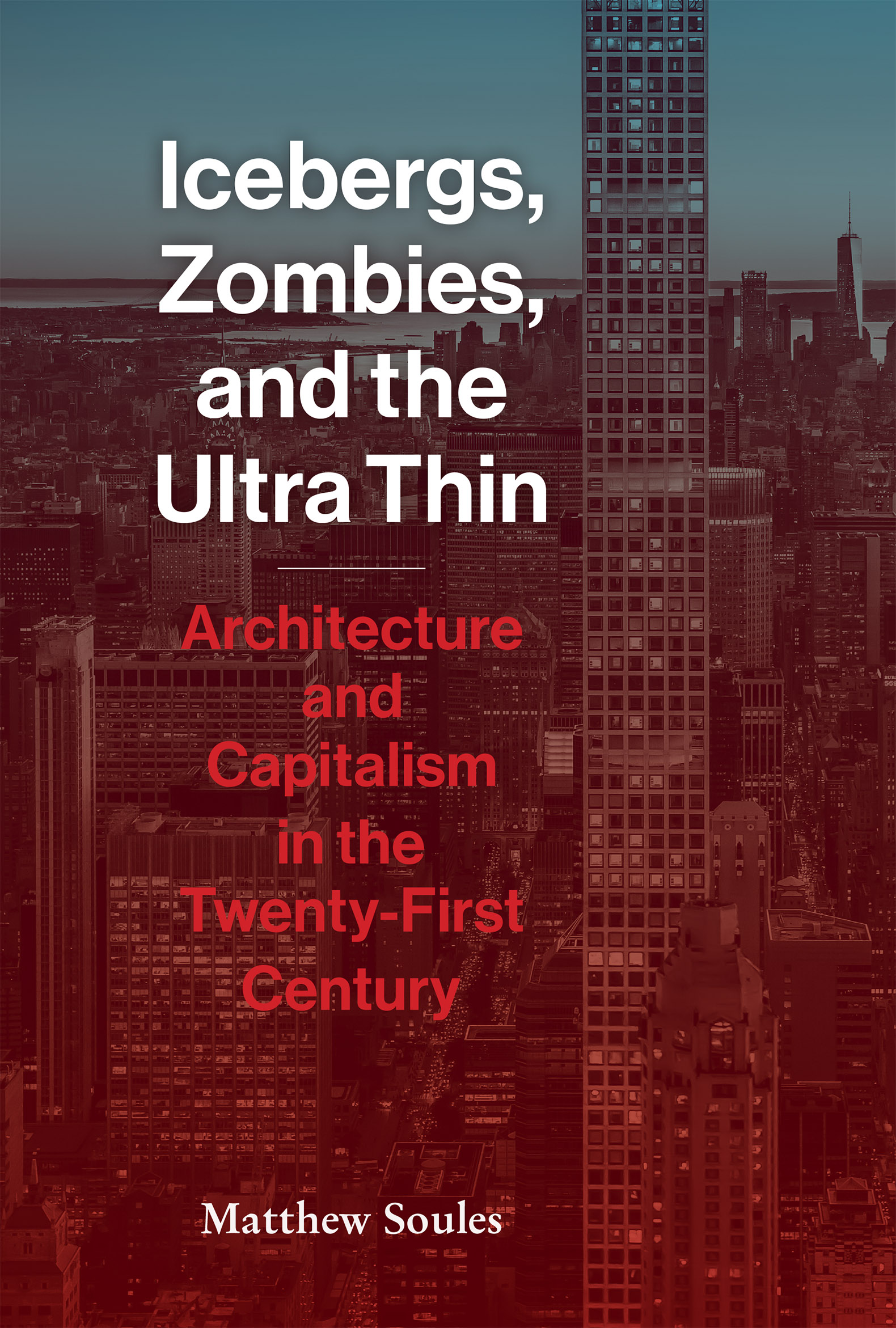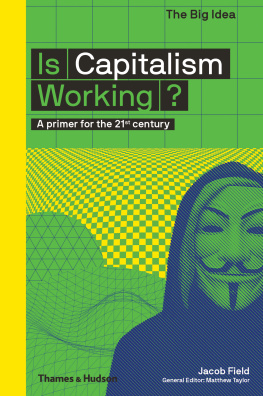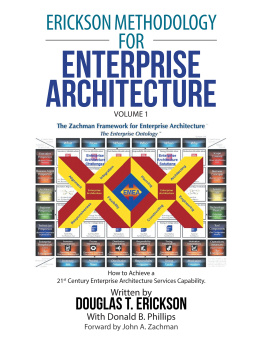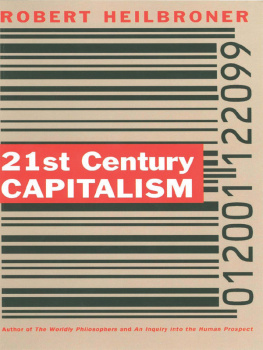Matthew Soules - Icebergs, Zombies, and the Ultra-Thin: Architecture and Capitalism in the 21st Century
Here you can read online Matthew Soules - Icebergs, Zombies, and the Ultra-Thin: Architecture and Capitalism in the 21st Century full text of the book (entire story) in english for free. Download pdf and epub, get meaning, cover and reviews about this ebook. year: 2021, publisher: Princeton Architectural Press, genre: Romance novel. Description of the work, (preface) as well as reviews are available. Best literature library LitArk.com created for fans of good reading and offers a wide selection of genres:
Romance novel
Science fiction
Adventure
Detective
Science
History
Home and family
Prose
Art
Politics
Computer
Non-fiction
Religion
Business
Children
Humor
Choose a favorite category and find really read worthwhile books. Enjoy immersion in the world of imagination, feel the emotions of the characters or learn something new for yourself, make an fascinating discovery.

- Book:Icebergs, Zombies, and the Ultra-Thin: Architecture and Capitalism in the 21st Century
- Author:
- Publisher:Princeton Architectural Press
- Genre:
- Year:2021
- Rating:4 / 5
- Favourites:Add to favourites
- Your mark:
- 80
- 1
- 2
- 3
- 4
- 5
Icebergs, Zombies, and the Ultra-Thin: Architecture and Capitalism in the 21st Century: summary, description and annotation
We offer to read an annotation, description, summary or preface (depends on what the author of the book "Icebergs, Zombies, and the Ultra-Thin: Architecture and Capitalism in the 21st Century" wrote himself). If you haven't found the necessary information about the book — write in the comments, we will try to find it.
Matthew Soules: author's other books
Who wrote Icebergs, Zombies, and the Ultra-Thin: Architecture and Capitalism in the 21st Century? Find out the surname, the name of the author of the book and a list of all author's works by series.
Icebergs, Zombies, and the Ultra-Thin: Architecture and Capitalism in the 21st Century — read online for free the complete book (whole text) full work
Below is the text of the book, divided by pages. System saving the place of the last page read, allows you to conveniently read the book "Icebergs, Zombies, and the Ultra-Thin: Architecture and Capitalism in the 21st Century" online for free, without having to search again every time where you left off. Put a bookmark, and you can go to the page where you finished reading at any time.
Font size:
Interval:
Bookmark:


Published by
Princeton Architectural Press
202 Warren Street
Hudson, New York 12534
www.papress.com
2021 Matthew Soules
All rights reserved.
No part of this book may be used or reproduced in any manner without written permission from the publisher, except in the context of reviews.
Every reasonable attempt has been made to identify owners of copyright. Errors or omissions will be corrected in subsequent editions.
Editor: Sara Stemen
Designer: Paula Baver
Cover design: Paul Wagner
Library of Congress Cataloging-in-Publication Data
Names: Soules, Matthew, author.
Title: Icebergs, zombies, and the ultra thin : architecture and capitalism in the twenty-first century / Matthew Soules.
Description: First edition. | New York : Princeton Architectural Press, [2021] | Includes index. | Summary: An exploration of how finance capitalism converts architecture to financial assets and alters the fabric of our global urban landscapesProvided by publisher.
Identifiers: LCCN 2020036598 (print) | LCCN 2020036599 (ebook) | ISBN 9781616899462 (hardcover) | ISBN 9781648960291 (ebook)
Subjects: LCSH: Architecture and societyHistory21st century. | Financialization. | ArchitectureEconomic aspects.
Classification: LCC NA2543.S6 S6423 2021 (print) | LCC NA2543.S6 (ebook) | DDC 720.1/03dc23
LC record available at https://lccn.loc.gov/2020036598
LC ebook record available at https://lccn.loc.gov/2020036599

A residential floor plan painted on the back of a model as part of a marketing strategy, at 55th Housing Fair, Nantong, China.
T he impetus for this book arose from the 20078 global financial crisis. The crisis underscored, among other things, the importance finance had come to play in global capitalism and placed the financial system under tremendous scrutiny. Alongside popular and political discourse, a large amount of work in fields ranging from economics to sociology addressed what is termed finance capitalism and the process of financialization. While much of this attention focused on the seemingly immaterial workings of things like Wall Street and too big to fail banks, some of it was attuned to the material dimensions of the crisis. After all, the crisis had subprime mortgages and housing at its core. Foreclosed homes in Florida, ghost estates in Ireland, and empty towers in China all entered the popular imagination, if they were not already the stuff of firsthand experience.
The financial crisis catalyzed widespread discussion and actions centered on the financialization of housing and cities that continue to the present. These range from debates on affordability to the implementation of taxes on empty homes. The United Nations established a special rapporteur, who in 2017 issued a report on structural changes in housing and financial markets and global investment whereby housing is treated as a commodity, a means of accumulating wealth and often as security for financial instruments that are traded and sold on global markets.
But while politicians, economists, popular media, and the general population are at least topically attuned to the financialization of the built environment, the discipline of architecture is largely mute. The degree to which the asset function of architecture has increased has not been met with a corresponding conceptual or operational framework on the part of architects. Current design discourse appears mostly outmatched by the agility and scale of capital that now drives the processes of architecture and urbanization across much of the globe. This is a pressing shortcoming for those interested in buildings and cities as well as anyone concerned with contemporary economic issues. This book aims to address this blind spot.
I commenced work on this topic with a grant from Canadas Social Sciences and Humanities Research Council that I received in 2012. The grant funded investigations of locations where the built environment experienced some of the most pronounced changesoften in the form of massive amounts of speculative construction followed by dramatic oversupply and the associated social, political, and economic challengesleading up to and following 20078. Between 2013 and 2015, I conducted on-the-ground documentation and analysis throughout Ireland and Spain, and in Florida and the Southwest in the United States. This initial work provided the seed from which the broader concerns of this book emerged.
The importance of finance is the defining characteristic of contemporary capitalism. Indeed, the ascent of finance capitalism is arguably the most important sociocultural transformation of the past four decades, and buildings play a uniquely significant role in this ascent. To fully understand architecture in the twenty-first century, it is imperative to understand its role within finance capitalism. And to fully understand how finance capitalism operates, it is vital to situate architecture within its workings.
Part of the challenge of addressing the relationship between finance and architecture is the isolation between disciplines interested in the financial dimension of buildings and those interested in design. While everyone accepts that buildings need to be both financed and designed, and there have been numerous efforts to make connections between finance and design, those involved in each domain usually view the other with distrust and maintain that money does not really affect design in any truly meaningful way (and vice versa). Academia embodies this schism. Those interested in the financial aspect of architecture and urbanism tend to work within the broad category of real estate. Architecture schools typically do not employ real estate experts, and if they do, their numbers are small and they often operate at the margin. And business schools, where real estate expertise is typically located, almost never have design knowledge represented on the faculty. Simply put, the two worlds are estranged. This long-standing isolation becomes all the more problematic as architecture increasingly functions as a medium of finance.
Many writers have examined the relationship between architecture and capitalism. The Italian architectural historian Manfredo Tafuri made exceptional and influential contributions, including his 1973 book Architecture and Utopia: Design and Capitalist Development. Tafuris thesis that capitalism renders all aesthetic ideologies useless for social production was received as the pronouncement of the death of architecture when it was first articulated in 1969. Among the contemporary Italian architect Pier Vittorio Aurelis numerous contributions, The Project of Autonomy: Politics and Architecture within and against Capitalism, from 2008, reevaluates Tafuri and the broader architectural discourse of 1960s and 70s Italy as a way to help locate the political possibility of architecture today. The American architect Peggy Deamer considers questions of architectural labor and, in 2014, edited a fantastic collection of texts, Architecture and Capitalism: 1845 to the Present. While these writers address issues that have profound contemporary relevance and have in various ways informed my position, none focus on finance capitalism. Instead, some of the more insightful work on the spatial and material character of financialization can be gleaned from writings on sociology and geography and those where political economy intersects with housing. The Marxist economic geographer David Harvey has been vital in conceptualizing urbanization as an agent of surplus capital absorption and in illuminating the characteristics of finance capitalism. Of his prodigious authorship, a good place to find the former is in
Font size:
Interval:
Bookmark:
Similar books «Icebergs, Zombies, and the Ultra-Thin: Architecture and Capitalism in the 21st Century»
Look at similar books to Icebergs, Zombies, and the Ultra-Thin: Architecture and Capitalism in the 21st Century. We have selected literature similar in name and meaning in the hope of providing readers with more options to find new, interesting, not yet read works.
Discussion, reviews of the book Icebergs, Zombies, and the Ultra-Thin: Architecture and Capitalism in the 21st Century and just readers' own opinions. Leave your comments, write what you think about the work, its meaning or the main characters. Specify what exactly you liked and what you didn't like, and why you think so.








